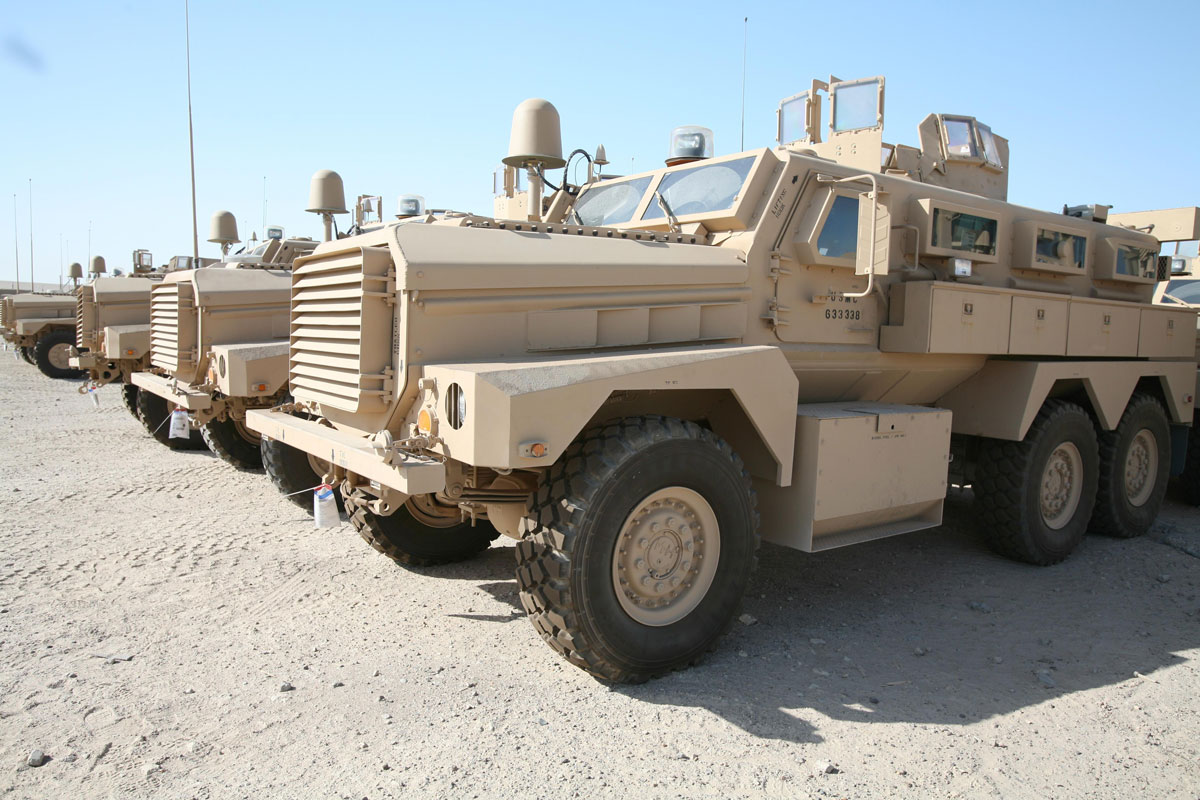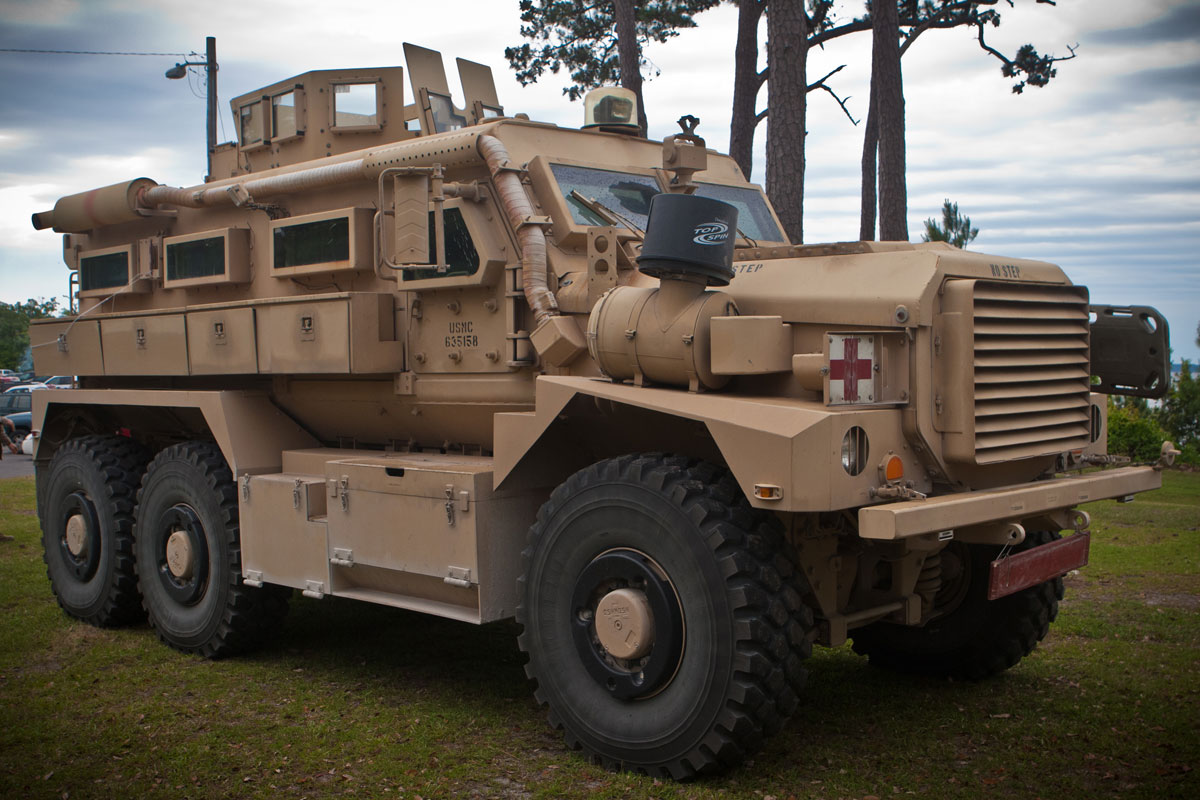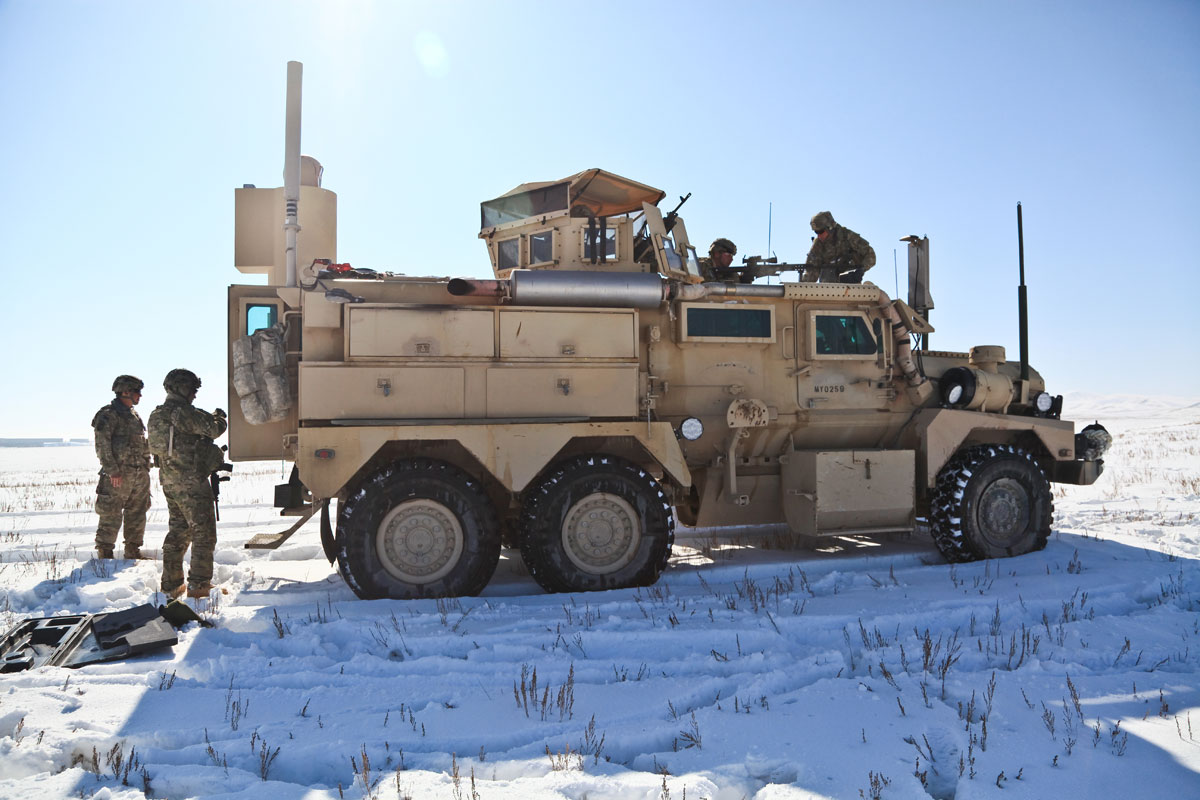Manufacturer: General Dynamics Land Systems
Services: USMC, USAF, USN, US Army Engine: Caterpillar C7 diesel Seating: 2 crew, 8 troops
Top Speed: 65 mph
Range: 350 miles

With proven combat survivability, the advanced ballistic and blast-protected Cougar 6×6 can seat 10 fully equipped passengers. When it comes to reliability, even after a hit the Cougar can return to the field in a matter of hours and perform a number of tasks such as Command and Control, EOD, Patrol, Convoy Support, Forward Observation, Reconnaissance, Med-Evac and more.

Proven combat survivability is the key to sending personnel out with a ‘go anywhere, do anything and get home to tell about it’ attitude. The advanced ballistic and blast-protected MRAP Cat II Cougar boasts an outstanding occupant survival rate. The Cougar 6×6 can seat ten fully equipped passengers. The Cougar is the paragon of troop transports in Iraq and Afghanistan, where it has withstood literally thousands of IED/landmine attacks. As for the survivability of the Cougar itself, not only is the vehicle built to drive into danger, its reparability typically allows it to return to service within a matter of hours. The Cougar’s reliability has gained it global popularity and is being sold to foreign allies in Canada, Iraq and the UK.

As a result of combat operations in Afghanistan and Iraq (Operations Enduring and Iraqi Freedom) a need was identified for a series of vehicles designed to survive the explosive threats posed by the Improvised Explosive Devices (IEDs) as well as conventional mining and ambush tactics employed against Coalition personnel. These vehicles were collectively described as MRAP (Mine Resistant Ambush Protected) capable, and would be specifically built to defeat these threats. One such vehicle is the Cougar. Manufactured by Force Protection Inc., the Cougar has been in production, and in service since 2004.

While new to the US military, vehicles such as the Cougar are not new designs. The Cougar design can trace its origins to the Olifant Manufacturing Company of South Africa, which originally developed the multi-wheeled, “V” shaped blast hull design for use by the South African military in its operations against Angola and Namibia in the 1980s.
These vehicles were designed to have good road speeds and endurance (to allow for the long distances traveled, as well as reduced maintenance requirements because of their wheeled design) and were specifically designed to maximize passenger survivability against small arms ambushes and conventionally laid mines.

